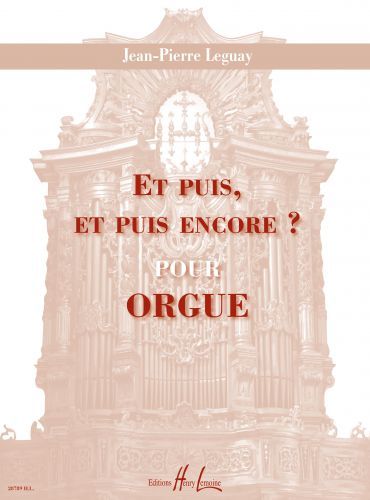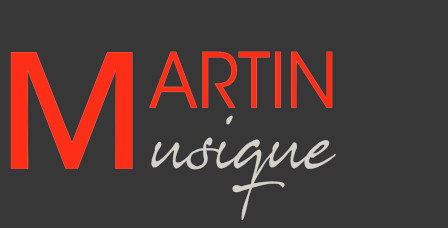En commande, généralement expédié sous 15 jours
Et puis, et puis encore ?
 (HEXA28789) :
19,70 €
(HEXA28789) :
19,70 €


Jean-Pierre LEGUAY
Editeur : Editions Henry Lemoine
Editeur : Editions Henry Lemoine
Genre : Musique Instrumentale
Formation : Orgue
Formation : Orgue



Ajoutez pour 35,00 € d'articles éligibles (1) à votre commande pour pouvoir bénéficier de la Livraison GRATUITE (2) en FRANCE
(1)Musique Instrumentale (2)Frais de la livraison gratuite : 0,01 €

The title of the work is taken from Charles Baudelaire's poem Le Voyage. Without commenting on Baudelaire, but in a more or less concealed manner, the poem fostered the composition.
Et puis, et puis encore ? progresses through five sections: Choeur à choeur, Double I, Tiento, Double II, Molto lento. Each of them ends with a calculated pause and a double bar that clearly places it as link in the overall continuity. The performer can either play every section, or only certain sections grouped according to a construction drawn from the following complete list:
- I-III, I-V, I-III-V, I-II-V, I-IV-V,
- II-III, II-V, II-III-V, II-IV-V, II-III-IV-V,
- III-V, III-IV-V,
- IV-V.
If during one of these groupings - each retaining through their direction something of the work's progression - two sections are in the same order as in the complete version of the score, it is preferable that at the end of the first of the two sections, the amplitude of the breath be respected.
If there is some discontinuity with relation to the original version, the performer is at liberty to determine the nature of the sequence.
Choeur à choeur, Tiento and Molto lento can be played individually.
Et puis, et puis encore ? is written in such a way that it can be played on a single or double manual organ not extending beyond C 5, with or without short octave, and without using the pedals. Choeur à choeur: on two manuals, or on a single manual with register changes - Double I and Double II: on a single manual, or on two coupled - Tiento: on a single manual with no stops, or on two.
The left hand in Tiento never extends beyond B 2, to include the cornets extending down to C.
The slur between a chord and a rest draws attention to the exact length of the chord.
The trills and tremolos, as well as the groups of semiquavers and demisemiquavers are played without an initial stress or slowed ending.
Jean-Pierre Leguay
Traduction: Jacqueline Rose
Orgue
Partition
Date de sortie : 04/05/2008
ISMN : 9790230987899
Et puis, et puis encore ? progresses through five sections: Choeur à choeur, Double I, Tiento, Double II, Molto lento. Each of them ends with a calculated pause and a double bar that clearly places it as link in the overall continuity. The performer can either play every section, or only certain sections grouped according to a construction drawn from the following complete list:
- I-III, I-V, I-III-V, I-II-V, I-IV-V,
- II-III, II-V, II-III-V, II-IV-V, II-III-IV-V,
- III-V, III-IV-V,
- IV-V.
If during one of these groupings - each retaining through their direction something of the work's progression - two sections are in the same order as in the complete version of the score, it is preferable that at the end of the first of the two sections, the amplitude of the breath be respected.
If there is some discontinuity with relation to the original version, the performer is at liberty to determine the nature of the sequence.
Choeur à choeur, Tiento and Molto lento can be played individually.
Et puis, et puis encore ? is written in such a way that it can be played on a single or double manual organ not extending beyond C 5, with or without short octave, and without using the pedals. Choeur à choeur: on two manuals, or on a single manual with register changes - Double I and Double II: on a single manual, or on two coupled - Tiento: on a single manual with no stops, or on two.
The left hand in Tiento never extends beyond B 2, to include the cornets extending down to C.
The slur between a chord and a rest draws attention to the exact length of the chord.
The trills and tremolos, as well as the groups of semiquavers and demisemiquavers are played without an initial stress or slowed ending.
Jean-Pierre Leguay
Traduction: Jacqueline Rose
Orgue
Partition
Date de sortie : 04/05/2008
ISMN : 9790230987899

